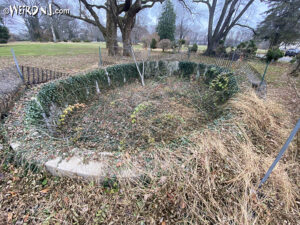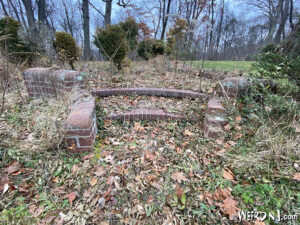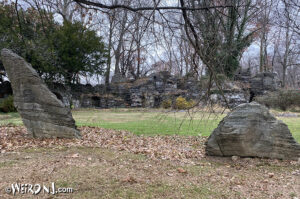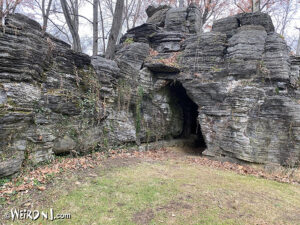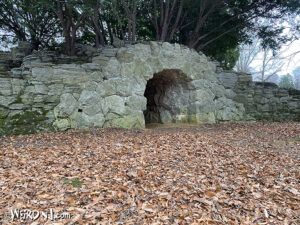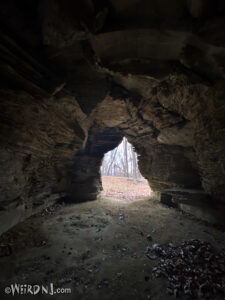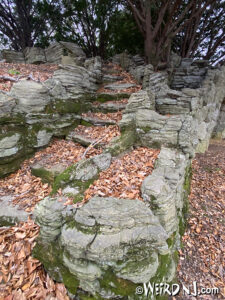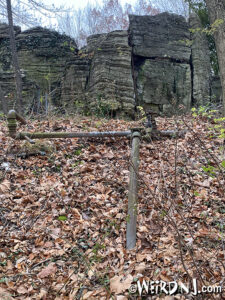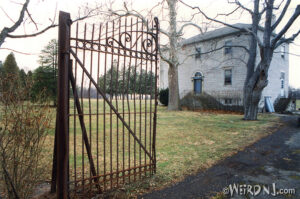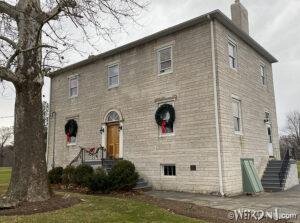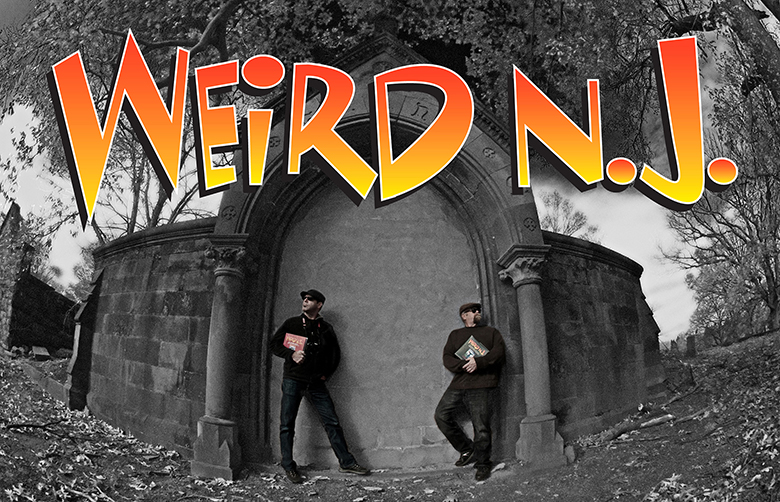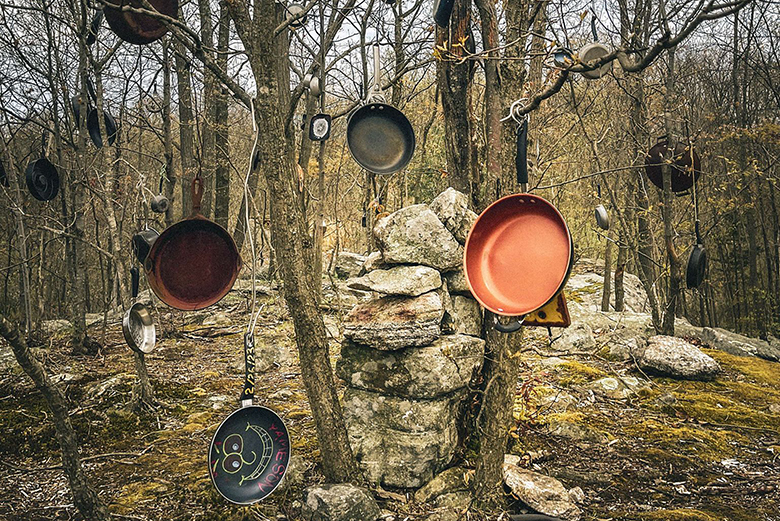King Bonaparte of Bordentown
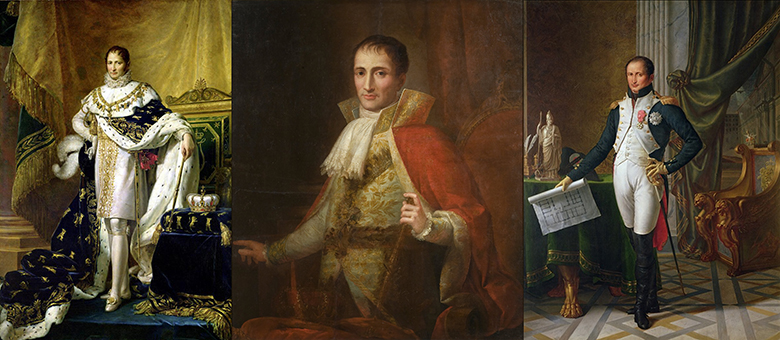
Looking at Bordentown today, few people would suspect that this quaint little Delaware River community had a history of international intrigue. The modest two and three-story brick buildings that line the main street seem instead to harken back to a time in the 18th and 19th centuries, when Bordentown served many a weary traveler as a welcoming lay-over, halfway on their journey between New York and Philadelphia. There was one particular sojourner in Bordentown’s past though, who would spend much more than just one night there, and would leave an indelible impression on, and under the town, in his wake.
 In 1815 Napoleon Bonaparte saw his hopes of European domination dashed at the Battle of Waterloo. After his crushing defeat, the French emperor realized that he would have to flee to another country, or suffer the vengeance of the European allies that he had so ruthlessly sought to conquer. He conferred with his older brother Joseph, the former King of Naples and Spain, and determined that America would be the safest place for them to escape to.
In 1815 Napoleon Bonaparte saw his hopes of European domination dashed at the Battle of Waterloo. After his crushing defeat, the French emperor realized that he would have to flee to another country, or suffer the vengeance of the European allies that he had so ruthlessly sought to conquer. He conferred with his older brother Joseph, the former King of Naples and Spain, and determined that America would be the safest place for them to escape to.
On July 29, 1815, Joseph Bonaparte boarded a ship bound for the New World, and a new life. Napoleon however, seems to have changed his mind at the last minute, and did not accompany his brother to the United States. He was captured soon thereafter, and exiled to St. Helena, where he would spend the rest of his life. Or would he? Although history tells us that the two men would never again see each other, over the years, some have speculated that they indeed did, and did so right here in New Jersey.
When Joseph Bonaparte first arrived in America, he set out in pursuit of a life of quite anonymity. After being recognized on the streets of New York and Philadelphia however, the forty-eight-year-old former monarch realized that he would have to find a residence that afforded him the privacy required by a man on the lam. For when Joseph fled from Europe, he did not leave empty handed. The elder Bonaparte not only escaped with his life and freedom, he also managed to liberate a considerable fortune from his homeland. A fortune, that no doubt, somebody might one day try to reclaim. Always aware of the possibility that someone might come across the Atlantic and try to whisk him and his ill-gotten booty away to face the music back in Europe, Joseph decided to move to a more remote locale.
Two months after his arrival in the United States, Joseph purchased a 211-acre parcel of land known as Point Breeze in Bordentown, N.J. Located just south of Trenton, on a piece of high ground overlooking Crosswicks Creek, the property was easily accessible by boat, or coach. The estate, which would grow in size in the next two years to approximately 1,700 acres, was probably chosen for its equidistant proximity to both of the major cities of Philadelphia, and New York.

Employing local labor, Joseph set about transforming the virgin wilderness of his newly acquired property into an estate befitting of a former king. He dammed creeks to make an artificial lake, cut roads and pathways through the forest, cleared fields, planted exotic gardens, and threw up rustic bridges over rocky ravines. Then he built a palace-like home for himself with huge fireplaces with marble mantels, great reception and dining rooms, and decorated it with rare tapestries, paintings, and statuary.
One of the most interesting features of the estate though, was the vast network of tunnels, which was constructed beneath the property. Some of these tunnels connected various buildings on the grounds, while others led from the basement of the main house, directly out to the Delaware River, and Crosswicks Creek. These subterranean waterways were said to have arched brick ceilings, and be wide enough to accommodate a long-oared rowboat. What better escape route for a man who was ever conscious of the possibility of his own abduction by foreign enemies?
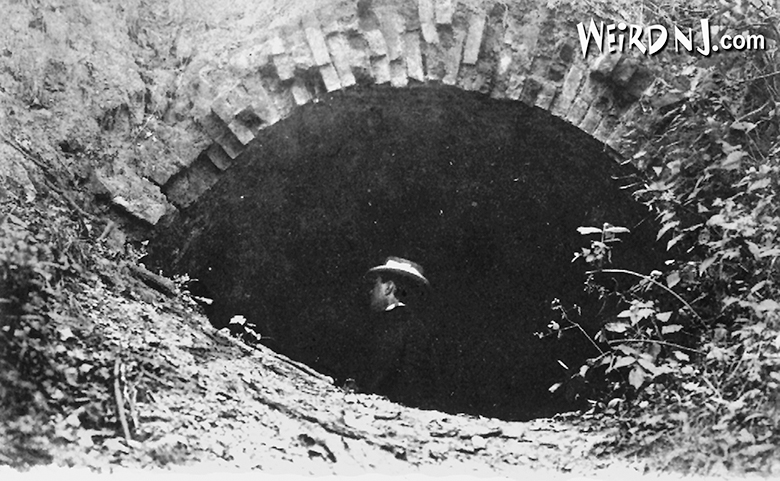
Shortly after the construction of Joseph’s house was complete, it was destroyed by fire. Many of Bonaparte’s most precious possessions: artworks, books and papers, were saved from the blaze however, thanks largely to the good people of Bordentown who formed a bucket brigade and removed what they could from the inferno. Apparently undaunted by this setback, Bonaparte temporarily moved into his stable and set about constructing a new house at Point Breeze.
By all accounts, Joseph truly enjoyed his new life as a country squire, and was well-liked by his New Jersey neighbors, who referred to him as “the good Bonaparte.” He frequently patronized the local shops and taverns, spending his money freely. During the construction of his estate, he employed many of the locals, reportedly paying liberal wages, and was even known to invent jobs for those seeking them when there was no real work to be had. He also allowed the local citizens free access to his vast estate ground, and the use of his lake for iceskating in the winter.
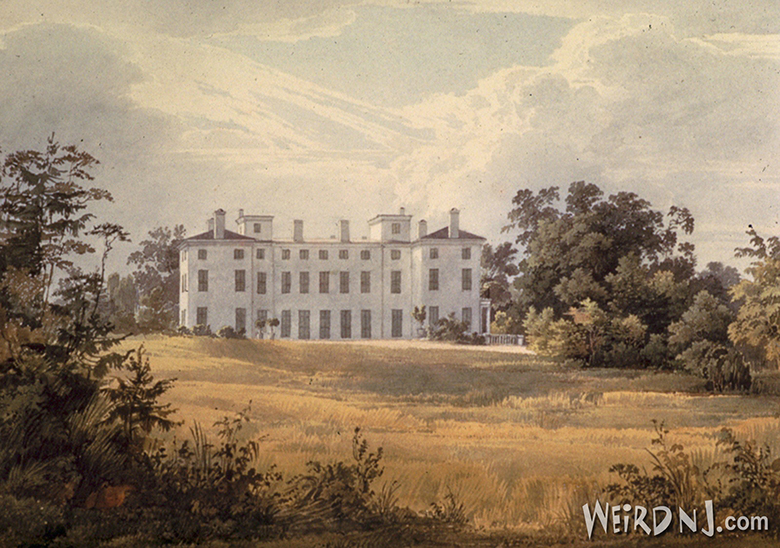
Joseph Bonaparte was well known for his fondness of entertaining visitors to his Point Breeze home, including such notable statesmen as John Quincy Adams, Daniel Webster, and the Marquis de Lafayette. But it was his many visitations from expatriated former countrymen that would give rise to a variety of rumors, and much conjecture over the years, as to Joseph’s true intentions here in America. Some would speculate that he was plotting to restore a Bonaparte to the French throne by means of another revolution. They claimed that it was for this reason that Joseph settled in Bordentown in the first place; to gain the earliest possible intelligence reports on the situation back in Europe from both the ports of New York, and Philadelphia.
This scenario doesn’t seem too plausible though, given the fact that Joseph seemed to lack his younger brother Napoleon’s appetite for power and conquest. He even turned down the thrown of Mexico when it was offered to him in 1820, after that country’s revolt against Spanish rule. Still, other theories speculated that Napoleon did not die at St. Helena in 1821, but was actually freed from captivity and whisked away to his brother’s Point Breeze estate, where he was rowed across the Delaware and into Joseph’s tunnels under the cover of darkness. Here he was rumored to stay, cloistered away, plotting his re-ascension to the French throne.
down the thrown of Mexico when it was offered to him in 1820, after that country’s revolt against Spanish rule. Still, other theories speculated that Napoleon did not die at St. Helena in 1821, but was actually freed from captivity and whisked away to his brother’s Point Breeze estate, where he was rowed across the Delaware and into Joseph’s tunnels under the cover of darkness. Here he was rumored to stay, cloistered away, plotting his re-ascension to the French throne.
In 1832, things had cooled down enough in Europe for Joseph Bonaparte to return. He lived in England for five years, then was reunited with his wife in Italy, after being separated for more than twenty years. He died in Florence in 1844, at the age of seventy-six.
We at Weird NJ were curious as to what ever became of the Bonaparte estate in Bordentown, and of the tunnels which ran beneath it, so we ventured down to Point Breeze, accompanied by life-long Bordentown resident Randy Ellis, to take a look around. Randy took us right to the site of the former estate, which we discovered was now owned by the Divine Word Missionaries. The grounds are still quite stately, overlooking the Crosswicks Creek and marsh, but there was little evidence of the estate’s former regal heritage.
After Joseph Bonaparte’s death, his Point Breeze estate and its contents were sold at auction to Henry Beckett, the son of the British consul in Philadelphia. Seeking to destroy everything on the property that reminded him of Bonaparte, Beckett demolished every building except the gatehouse, where he lived while constructing a new house. In 1874 he sold the estate to the Roman Catholic Order, who used the property as a summer retreat for 37 years.
In 1911 the Point Breeze property was purchased by a man named Harris Hammond, who added the swimming pools, wrought iron gazebo, and odd “broken-down grotto,” which can still be found on the estate. The grotto is a man-made landscape feature, constructed of imported stone, and made to resemble a sort of primitive ruin. Amidst its labyrinth of cave-like walkways one can see the remains of rusty plumbing, indicating that at one time the structure was also a working fountain. Hammond lost the property during the depression, and the main house, built by Henry Beckett, stood vacant for several years.
The current owners of the estate purchased the property in 1941, only to learn that old rumors often die hard. The background information that the order hands out to the curious these days quotes a Father Emil Lesage, in a letter dated Jan. 26, 1942, saying: “Visitors who have heard about our secret tunnels and closets keep coming to our house. They take up a lot of time. Father Provincial wants us to de-glamorize the building and to show them only the first floor.”
The Point Breeze estate was used by the missionaries as a seminary until 1983, when a fire destroyed the faculty house. The seminary buildings were remodeled, and are now used as a residence for retired Divine Word Missionaries, who have spent the large portion of their adult lives in places like Ghana, the Philippines, India, and Papua New Guinea.
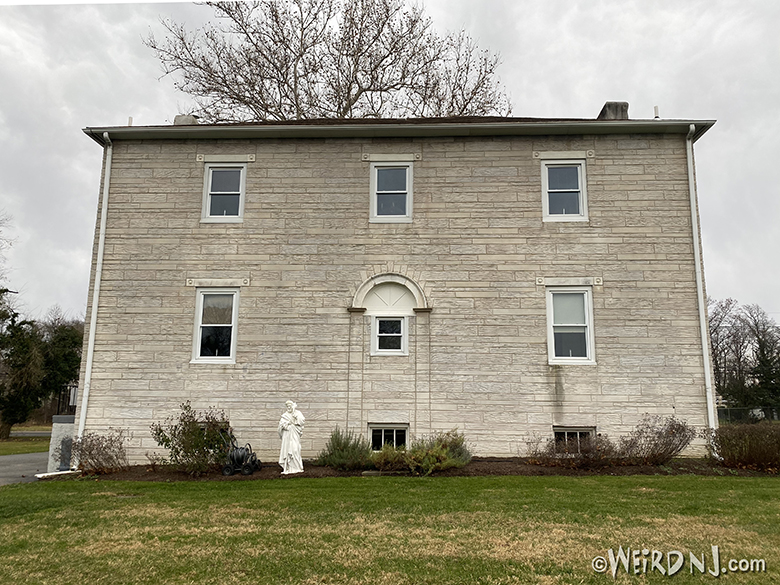
All of this history is well and good, but what we here at Weird NJ wanted to know was this: What ever happened to Joseph Bonaparte’s tunnels? It’s a matter of record that they did indeed exist. Although the gatehouse is the only original structure on the property that still survives from the days of Joseph Bonaparte above ground level, that does not necessarily mean that the vast underground network of tunnels beneath the ground has also been demolished.
 “They’re definitely still there,” Les Hartman, a Trenton based attorney, told Weird NJ “My father’s friend, who is very old now, said that he was in them years ago. He told my dad that there was still water in them, and you could even see French handwriting on the brick walls.”
“They’re definitely still there,” Les Hartman, a Trenton based attorney, told Weird NJ “My father’s friend, who is very old now, said that he was in them years ago. He told my dad that there was still water in them, and you could even see French handwriting on the brick walls.”
The historical fact sheet that the secretary of the monastery gave us even said that the remnants of a tunnel entrance were located somewhere on the property. Now, we thought, we’re getting somewhere! Excitedly, we proceeded to tumble down the steep, thorn bush entangled embankment toward the river, looking for tunnels all the while. It was at this time that the caretaker of the estate found us and informed us that we were embarking down the wrong path. He was kind enough to set us straight, and walk us over toward the tunnel entrance that the monastery’s literature had alluded to. As we walked across an open area of lawn where the house of Joseph Bonaparte once stood, George (the groundskeeper) told us that a recent storm had uprooted a couple of massive old trees on the edge of the property. When a truck was brought in to cut the trees up and haul them away, a funny thing happened.
us that we were embarking down the wrong path. He was kind enough to set us straight, and walk us over toward the tunnel entrance that the monastery’s literature had alluded to. As we walked across an open area of lawn where the house of Joseph Bonaparte once stood, George (the groundskeeper) told us that a recent storm had uprooted a couple of massive old trees on the edge of the property. When a truck was brought in to cut the trees up and haul them away, a funny thing happened.
“One of the truck’s wheels got stuck in a hole in the ground over there.” George explained, motioning to a large piece of plywood laying on the grass. When we lifted the wood from the ground we were astonished by what we saw: There was a hole big enough around for a man to climb down into, leading straight down into the dark earth. The walls of the hole were obviously man-made, built of stone and mortar, and appeared to be very old. The hole was located directly under where George had told us Bonaparte’s house had once stood.
“After the tree guys left, I noticed that they had shoved a bunch of branches into the hole,” George said. “I pulled them out and went down into it. I gotta tell you though, it closes up on you real fast once you get down in there!”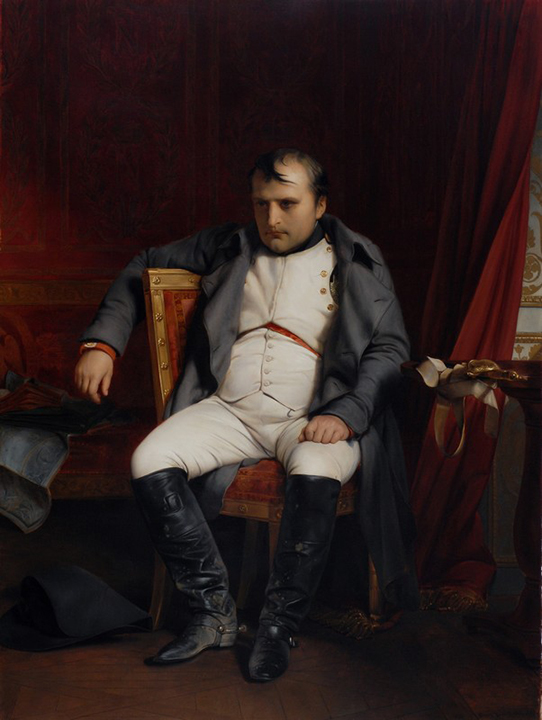
George then directed our attention a few yards away to where the property begins its steep drop-off on its way down to Crosswicks Creek. There, just a few feet down the slope, piled over with discarded tree trunks and branches, was the unmistakable outline of a tunnel entrance. Poking our noses in past the years of debris, we could clearly see the arched brickwork of the cavern’s ceiling, leading straight toward where the Bonaparte mansion used to stand. Unfortunately, decades of dumping had made the tunnel completely impassable.
If the tunnels built by Joseph Bonaparte do still exist somewhere beneath Bordentown, which we now have reason to believe they do, wouldn’t it be a worthwhile endeavor for some historical organization to excavate them? Might they not shed some light for us on this all-but-forgotten chapter in international political history? Who knows what we might find down in those dark and clammy recesses, where the temperature never changes, and the only sound heard is the faint echo of dripping water on the murky canals. Perhaps the skeleton of Napoleon himself awaits us, slumped over his maps and battle plans for reclaiming France, one bony hand tucked inside the lapel of his uniform.
MONMOUTH UNIVERSITY STUDENTS DIG THE BONAPARTE TUNNELS
2007 and 2008 saw Monmouth University students digging around the Joseph Bonaparte estate in Bordentown, according to the New York Times, to “unearth the foundations of (his) first house… which was destroyed by fire in 1820.” The students recovered “more than 14,000 artifacts, mostly remnants of china, marble, and glass,” including the broken glass from hundreds of wine bottles, which would stand to prove Bonaparte’s nickname from his King of Spain days: Joey Bottles (hey, it pays to be Napoleon’s brother). The Times article also mentioned the tunnels that honeycombed the former estate, “used to bring in supplies” and to offer “a quick escape route if enemies came to call, and one student was quoted as saying a brick archway located in the woods “May have once supported a carriageway to Bonaparte’s house.”
 The preceding article is an excerpt from Weird NJ magazine, “Your Travel Guide to New Jersey’s Local Legends and Best Kept Secrets,” which is available on newsstands throughout the state and on the web at www.WeirdNJ.com. All contents ©Weird NJ and may not be reproduced by any means without permission.
The preceding article is an excerpt from Weird NJ magazine, “Your Travel Guide to New Jersey’s Local Legends and Best Kept Secrets,” which is available on newsstands throughout the state and on the web at www.WeirdNJ.com. All contents ©Weird NJ and may not be reproduced by any means without permission.
Visit our SHOP for all of your Weird NJ needs: Magazines, Books, Posters, Shirts, Patches, Stickers, Magnets, Air Fresheners. Show the world your Jersey pride some of our Jersey-centric goodies!
Retro Weird Wear Never Goes Out of Style…or Out of Stock!
Now you can have all of your favorite designs from the past on all kinds of cool new Weird Wear: Men’s Wear, Women’s Wear, Kids, Tee Shirts, Sweatshirts, Long Sleeve Tees, Hoodies, Tanks Tops, Tie Dyes, Hats, and accessories like Mugs, Backpacks, Stickers, Buttons and more! All are available in all sizes and a variety of colors.
Represent Jersey!

